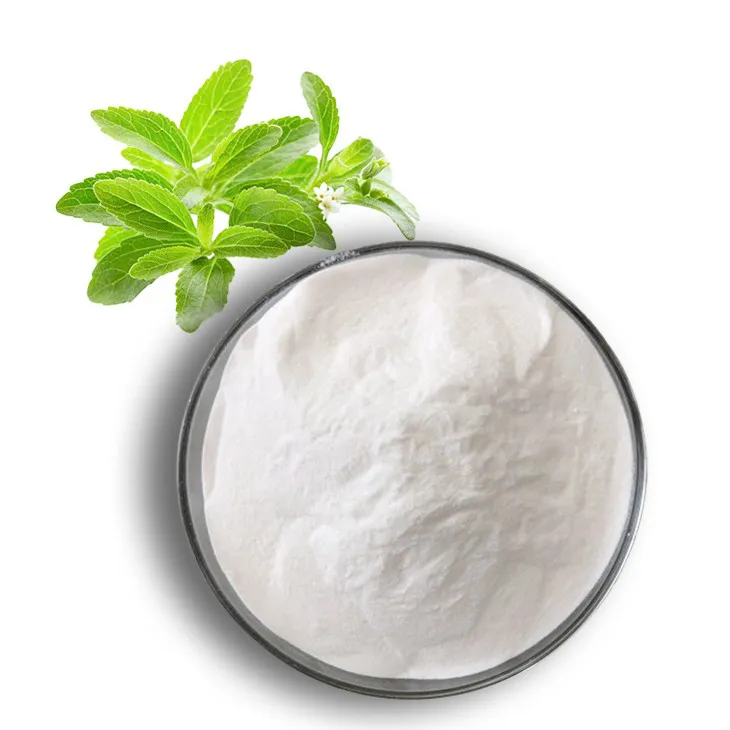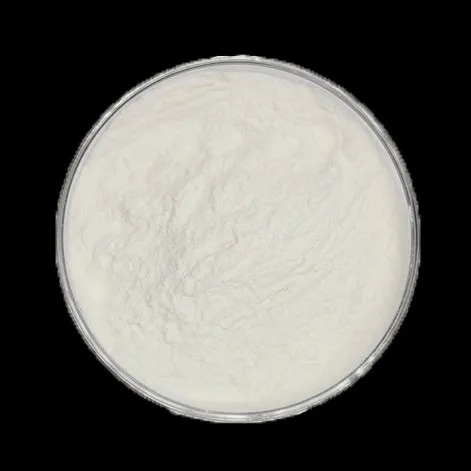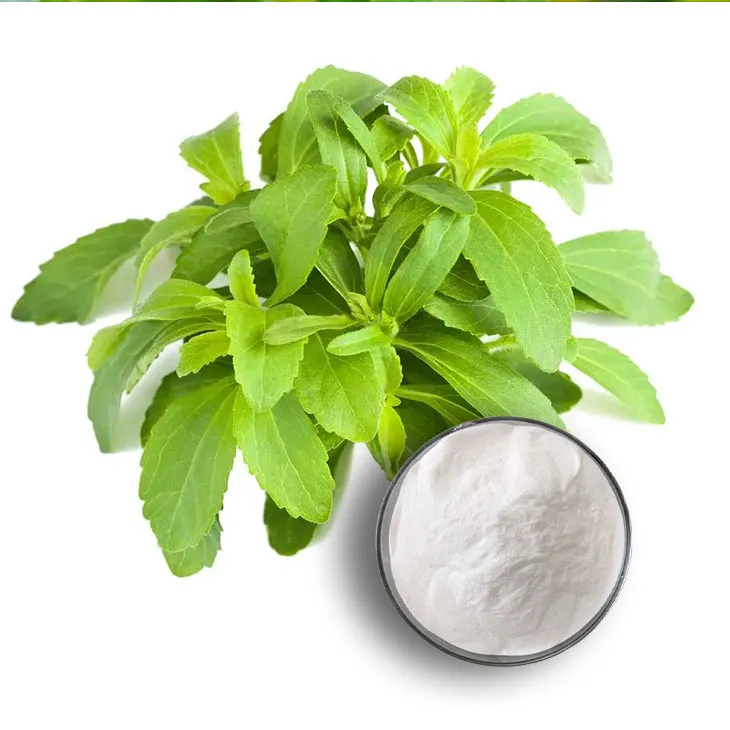- 0086-571-85302990
- sales@greenskybio.com
Extraction process of stevia extract.
2024-11-30

1. Introduction
Stevia Extract is becoming increasingly popular in the market as a natural sweetener. It is derived from the leaves of Stevia rebaudiana, also known as Sweetleaf. The extraction process is crucial in obtaining a high - quality product with a pure and intense sweet taste. This article will explore the various steps involved in the extraction of Stevia Extract in detail.

2. Harvesting of Stevia Leaves
The first step in the extraction process is the harvesting of the Stevia rebaudiana leaves. The timing of the harvest is very important. Leaves are typically harvested when they reach a certain level of maturity. If harvested too early, the leaves may not contain a sufficient amount of the sweet - tasting substances. On the other hand, if harvested too late, the quality of the extract may be affected.
During the harvest, care should be taken to select healthy leaves. Diseased or damaged leaves should be removed as they can introduce impurities or affect the overall quality of the extract. Once the leaves are harvested, they are ready for the extraction process.

3. Maceration
Maceration is the initial step in the extraction process. In this step, the harvested stevia leaves are soaked in a suitable medium. The two most common media used are water and alcohol - based solvents.
3.1 Maceration with Water
When water is used as the medium for maceration, it has the advantage of being a natural and safe solvent. The leaves are placed in water and allowed to soak for a certain period of time. During this time, the natural sweeteners present in the leaves start to dissolve into the water. However, water may not be as effective as alcohol - based solvents in extracting all the sweet components, especially some of the more complex steviol glycosides.
3.2 Maceration with Alcohol - based Solvents
Alcohol - based solvents, such as ethanol, are often used in maceration. Ethanol has a better ability to dissolve a wider range of steviol glycosides compared to water. When the leaves are soaked in ethanol, the extraction process can be more efficient. The alcohol - based solvents can penetrate the cell walls of the leaves more effectively, releasing the sweet - tasting substances into the solvent. However, the use of alcohol - based solvents requires more careful handling due to their flammability and potential toxicity.

4. Separation of the Extract from Leaf Debris
After maceration, the next step is to separate the liquid extract from the leaf debris. Two common techniques are used for this purpose: centrifugation and filtration.
4.1 Centrifugation
Centrifugation involves spinning the macerated mixture at a high speed. This causes the heavier leaf debris to be forced to the bottom of the container, while the liquid extract remains on top. The liquid can then be easily decanted or removed using appropriate equipment. Centrifugation is a relatively quick and efficient method for separating the extract from the solid debris.
4.2 Filtration
Filtration is another method used to separate the extract from the leaf debris. In filtration, the macerated mixture is passed through a filter medium, such as a filter paper or a membrane filter. The filter medium allows the liquid extract to pass through while retaining the leaf debris. Filtration can be carried out using different types of filters depending on the desired level of purity of the extract. For example, a coarse filter can be used first to remove large pieces of debris, followed by a finer filter to remove smaller particles.

5. Purification of the Extract
The extract obtained after separation still contains impurities. Therefore, further purification is required to isolate the pure steviol glycosides. Two common methods used for purification are chromatography and other advanced separation methods.
5.1 Chromatography
Chromatography is a powerful technique for purifying Stevia Extract. There are different types of chromatography that can be used, such as column chromatography and high - performance liquid chromatography (HPLC). In column chromatography, the extract is passed through a column filled with a stationary phase. Different components in the extract interact differently with the stationary phase, causing them to be separated as they move through the column. HPLC is a more advanced form of chromatography that can achieve a very high level of purification. It uses a high - pressure pump to force the extract through a very fine column, allowing for precise separation of the steviol glycosides.
5.2 Other Advanced Separation Methods
In addition to chromatography, other advanced separation methods can also be used for purifying stevia extract. For example, membrane separation techniques can be used to separate different components based on their molecular size. Ultrafiltration membranes can be used to retain larger impurities while allowing the smaller steviol glycosides to pass through. Another method is ion - exchange chromatography, which can be used to separate components based on their charge. These advanced separation methods can be used alone or in combination with chromatography to achieve a high - quality, pure stevia extract.
6. Conclusion
The extraction process of stevia extract involves several important steps, from the harvesting of the stevia leaves to the final purification of the extract. Each step plays a crucial role in obtaining a high - quality product that can be used as a natural sweetener in the market. With the increasing demand for natural sweeteners, the extraction process of stevia extract is likely to continue to be refined and improved in the future.
FAQ:
What is the first step in the extraction process of Stevia extract?
The first step in the extraction process of Stevia extract is harvesting the leaves of Stevia rebaudiana at the appropriate time. After that, the extraction process begins with maceration, which involves soaking the leaves in a suitable medium such as water or alcohol - based solvents.
Why is maceration used in the extraction of Stevia extract?
Maceration is used in the extraction of Stevia extract to draw out the natural sweeteners present in the leaves. By soaking the leaves in a suitable medium like water or alcohol - based solvents during maceration, the sweet - tasting substances can be released from the leaves.
What techniques are used to separate the liquid extract from the leaf debris after maceration?
After maceration, centrifugation or filtration techniques are used to separate the liquid extract from the leaf debris. These methods help in obtaining the liquid part which contains the sweet components of the Stevia leaves while removing the solid leaf remains.
Why is further purification needed for the resulting Stevia extract?
The resulting extract after the initial separation still contains impurities. Further purification through chromatography or other advanced separation methods is needed to isolate the pure steviol glycosides, which are the key sweet components in the Stevia extract and to ensure its quality for use as a natural sweetener in the market.
What are the key sweet components in Stevia extract?
The key sweet components in Stevia extract are steviol glycosides. These are isolated through the purification process which involves methods like chromatography after the initial extraction and separation steps to obtain a pure and high - quality Stevia extract for use as a natural sweetener.
Related literature
- Optimization of Stevia rebaudiana Extract Production"
- "Advanced Techniques in Stevia Extract Purification"
- "The Science behind Stevia Extract Extraction"
- ▶ Hesperidin
- ▶ Citrus Bioflavonoids
- ▶ Plant Extract
- ▶ lycopene
- ▶ Diosmin
- ▶ Grape seed extract
- ▶ Sea buckthorn Juice Powder
- ▶ Fruit Juice Powder
- ▶ Hops Extract
- ▶ Artichoke Extract
- ▶ Mushroom extract
- ▶ Astaxanthin
- ▶ Green Tea Extract
- ▶ Curcumin
- ▶ Horse Chestnut Extract
- ▶ Other Product
- ▶ Boswellia Serrata Extract
- ▶ Resveratrol
- ▶ Marigold Extract
- ▶ Grape Leaf Extract
- ▶ New Product
- ▶ Aminolevulinic acid
- ▶ Cranberry Extract
- ▶ Red Yeast Rice
- ▶ Red Wine Extract
-
Senna Leaf Extract
2024-11-30
-
Lemon Balm Extract
2024-11-30
-
Peppermint Extract Powder
2024-11-30
-
Elderberry Extract
2024-11-30
-
Red Date Extract
2024-11-30
-
Tongkat Ali Extract
2024-11-30
-
Hawthorn powder
2024-11-30
-
Aminolevulinic acid
2024-11-30
-
Clove Powder
2024-11-30
-
Nettle leaf extract
2024-11-30





















